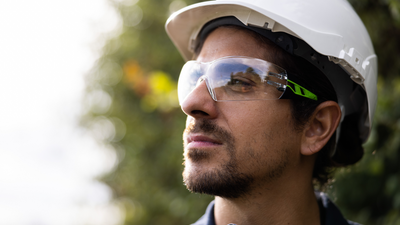Dangerous Goods Classification
The classification of our products for the purpose of transport by land, sea or air is carried out according to the relevant organisations (ADG, IATA, IMDG). We can assist in the transport within (and into and out of) Australia, subject to the prevailing legislation as required.
Most gases have some dangerous properties; they may be asphyxiating, toxic, corrosive, flammable or oxidising. Sometimes they present several of these dangers at the same time. Inert gases are themselves dangerous when their presence reduces the oxygen content of air.
Toxic Gases
These may be both flammable (and even self-igniting) and toxic. They are poisonous to organisms beyond a certain concentration and as a function of the duration of exposure. The toxicity of a product is defined by its CL 50 or lethal dose expressed in ppm or in mg per liter of air; this is the concentration that causes the death of 50% of a test population of rats after four hours of inhalation.
Precautions to be taken:
- Eliminate all leaks.
- Provide continuous monitoring of dangerous areas with an alarm and ventilation.
- Make sure that bleed lines discharge to the outside.
- When working in a suspected area, use a self-contained breathing apparatus.
- Mark off dangerous areas.
- Use only compatible materials.
- Decontaminate worn installations and protective gear after they have been exposed to toxic gases.
Refrigerated or Cryogenic Liquefied Gases
The dangers presented by these are associated with: - the very low temperatures (liquid nitrogen: -196°C), which can freeze human tissue (eyes, skin), weaken steel, and make plastics brittle; - their very great liquid-gas coefficient of expansion (700 to 800 times), which can create an enormous rise in pressure.
Precautions to be taken:
- Wear gloves (sleeves must be tucked inside the gloves), goggles, and protective footgear.
- Install a thermal relief valve between two isolation valves that may contain a cryogenic liquid or any liquefied gas.
- Make sure the floor is clean floor and made of an inflammable material in case of a leak of liquid oxygen.
- Never walk through a cryogenic cloud (risk of asphyxiation).
Combustible or Flammable Gases, Including Pyrophoric Gases
Gases that burn in the presence of air (or of an oxidant) and that, mixed in certain proportions with air (or an oxidant) produce an explosive atmosphere. Each flammable gas has its own limits of flammability in air, between which it can ignite: the lower and upper flammability limits (LEL - UEL). Between these two limits lie the concentrations of mixtures capable of propagating the fire. Near the limits, the propagation rate (combustion rate) is usually slow. Between these limits, there is a range where the propagation rate is very high (explosion with extremely violent mechanical effects). For ignition to occur, there must be a source of energy, whose minimum value varies as a function of each gas. Ignition takes place when the temperature of the gas reaches or exceeds the temperature of auto-ignition in air (or less, in the presence of a catalyst).
Precautions to be taken:
- Eliminate leaks.
- Provide continuous monitoring of dangerous areas with an alarm and ventilation when the concentration in air of the flammable gas reaches 25% of the lower flammability limit (LFL).
- Never smoke. Eliminate hot spots.
- Use special electrical equipment.
- Make sure that bleed lines discharge to the outside.
- Make risky areas inert.
- Special cases: some gases, like silane, are pyrophoric or self-igniting; they burn spontaneously upon contact with air at ambient temperature; they are especially dangerous.
Neutral or Inert Gases
These are gases that do not support combustion and are not toxic. On the other hand, they present a risk of asphyxiation (anoxia) reducing the oxygen content of air. An oxygen concentration of less than 18% is dangerous.
Precautions to be taken:
- Eliminate leaks.
- Ventilation of dangerous areas.
- Never enter a suspicious area without first checking its oxygen concentration
- If the concentration is less than 18%, use a self-contained breathing apparatus.
- Bleed lines must discharge to the outside in a risk-free area.
- Mark off the areas where there is a danger of asphyxiation.
Corrosive Gases
Most of the time these are also toxic. These gases tend to chemically attack many materials: - metals, clothing, cutaneous tissue. Often non-corrosive when dry (anhydrous), the slightest trace of moisture renders them extremely corrosive. Some of these gases destroy cutaneous tissue and cause skin burns that are not always immediately evident.
Precautions to be taken:
- Eliminate all leaks.
- Provide continuous monitoring of dangerous areas with an alarm and ventilation.
- Wear appropriate protective gear: goggles, gloves, boots, wetsuits, etc.
- In the event of a spill on the skin or in the eyes, flood the affected area with running water immediately and for 15 minutes and consult an ophthalmologist.
- Use only compatible materials.
- Special procedures: nitrogen purge of installations not being used, etc.
Combustive or Oxidising Gases
These are gases that permit, support, and fan combustion. The most common are air and oxygen (others include N2O, NO2, NO, etc.)
Precautions to be taken:
- Eliminate all leaks and all risks of over-oxygenation of work atmospheres; an oxygen concentration of 25% can generate active combustion.
- Provide continuous monitoring of dangerous areas with an alarm and ventilation.
- Never smoke.
- Wear fire-retardant garments.
- Use oxygen clean equipment.
- Make sure that bleed lines discharge to the outside. Especially in the case of high-pressure O2, carefully degrease equipment that comes into contact with the gas (risk of sparks) and only use compatible materials (especially joints).
- Open valves slowly. (no pressure jolts).
- Prevent the entry of dust by protecting the intakes of pipes and hoses.
